The lack of colour in the 2023 Formula 1 grid may have been expected but has nonetheless been to the dismay of many fans.
F1 teams have long appreciated the benefits of leaving areas of their cars unpainted. Dark shades made it more difficult for their rivals to inspect the geometries of their aerodynamic surfaces.But in recent years teams have had another reason to incorporate bare carbon into their liveries: Less paint means lower weight.
When Aston Martin appeared on the grid in 2021 the team soon began seeking a lighter paint for their shade of British Racing Green. This was partly because the new technical regulations coming for the following season increased the minimum weight limit to 798kg.
After the beginning of last season, several teams reduced the painted areas on their cars in a bid to trim off a few more grams. Aston Martin was one of them. Its technical director Dan Fallows admitted changes in the weight of parts they don’t manufacture, such as Pirelli’s tyres, posed a problem they hadn’t entirely foreseen.
“The weight limit did go backwards and forwards,” he conceded. “There was an increase in the weight of the tyres.
Advert | Become a RaceFans supporter and
“There are ways that we can integrate that into the regulations, so that’s really what it came down to. Yes, these cars are, as we’ve seen, a reasonable challenge to get them down to the weight limit.
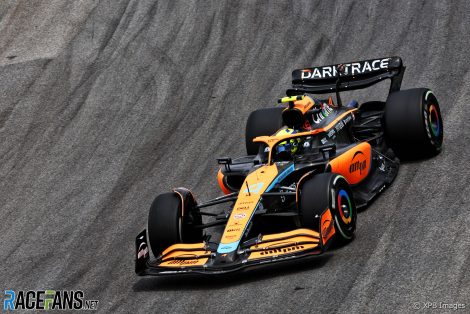
Fallows says Aston Martin made good progress reducing the weight of their car during 2022. “AMR22, by the time we’d finished with it was in a much better shape than we were at the start of the season,” said Fallows. “So we’re in a pretty good position, I think, going into AMR23.”
Nonetheless their new AMR23 appeared with much the same livery as last year. Its front and rear wings were left black, as is also the case on Williams, Alfa Romeo, Mercedes and Ferrari’s new cars. But do fans hoping the grid doesn’t become overrun with dark liveries have cause for optimism?
One team which scaled back the paintwork on its 2022 car presented a machine with a splash more colour this week. McLaren’s MCL60 sported an orange rear wing at its launch on Monday.
Team principal Andrea Stella said they have been successful in slimming down their chassis. That has allowed them to use a little more paint.
“I would be comfortable to say that our engineers have done a good job,” Stella explained. “They’ve been able to take off weight in several areas of the car and so for what concerns our car we are, I think, in a good position from that point of view and we can finally give some more space for orange and vinyl [stickers] on the car rather than taking off up to the last bit.”
Advert | Become a RaceFans supporter and

On the face of the evidence so far, that seems a little optimistic. Most teams appear to have stripped off as much paint as they can. There will have been fraught conversations between many engineering and marketing departments during the off-season.
The proof of whether Stella is right or not will come over the season ahead, and whether we see teams trimming back the paintwork as they did last year, or following McLaren’s lead in adding a splash of colour.
F1 car liveries revealed so far
Advert | Become a RaceFans supporter and
Bringing the F1 news from the source
RaceFans strives to bring its readers news directly from the key players in Formula 1. We are able to do this thanks in part to the generous backing of our RaceFans Supporters.
By contributing £1 per month or £12 per year (or the equivalent in other currencies) you can help cover the costs involved in producing original journalism: Travelling, writing, creating, hosting, contacting and developing.
We have been proudly supported by our readers for over 10 years. If you enjoy our independent coverage, please consider becoming a RaceFans Supporter today. As a bonus, all our Supporters can also browse the site ad-free. Sign up or find out more via the links below:
2023 F1 season
- FIA president cleared of alleged interference in two 2023 races
- First week viewing figures for new Drive to Survive season fall again
- Max who? Drive to Survive season six prefers its favourite faces
- RaceFans’ complete 2023 season review
- The F1 drivers who pulled off the 10 biggest charges through the field in 2023




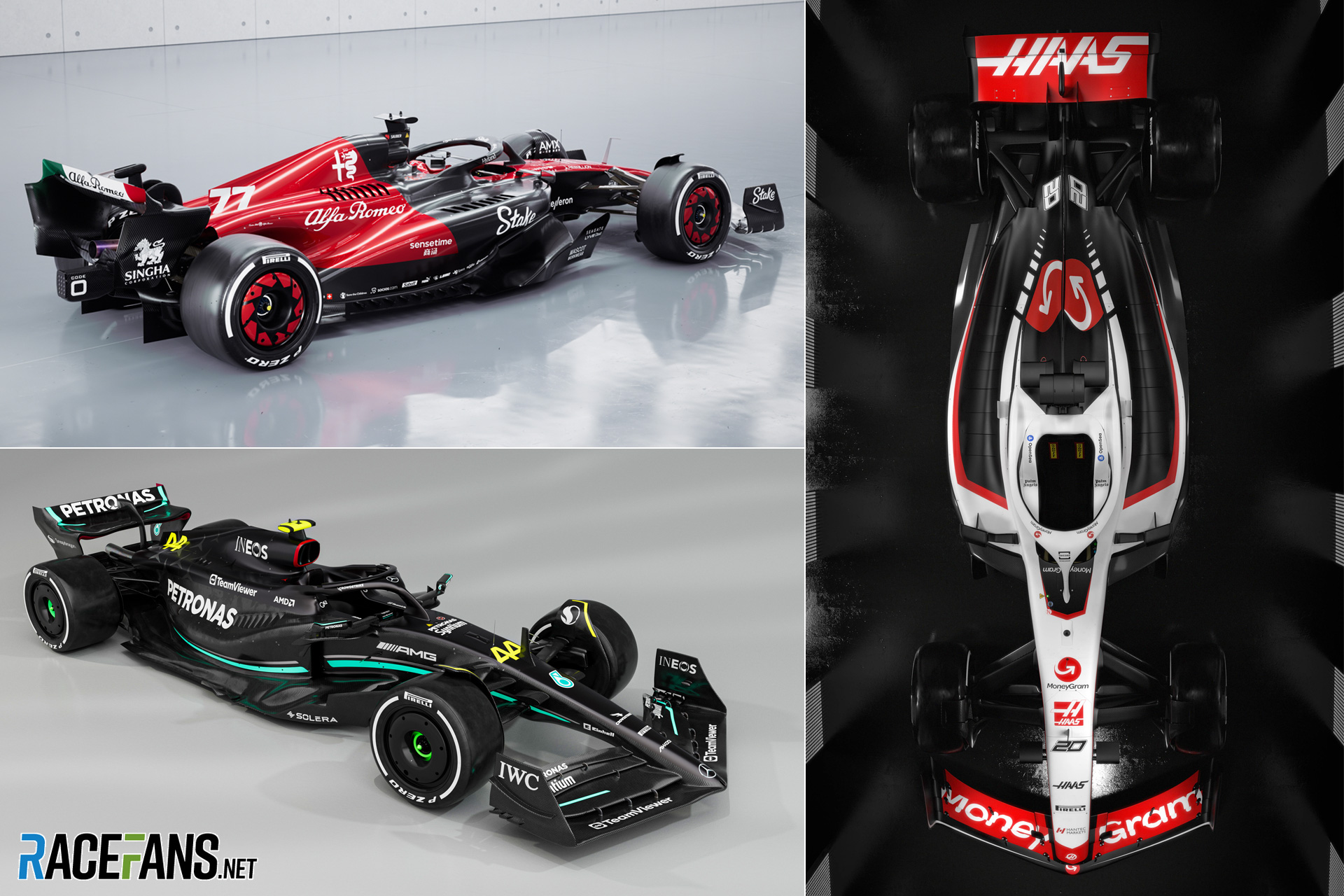
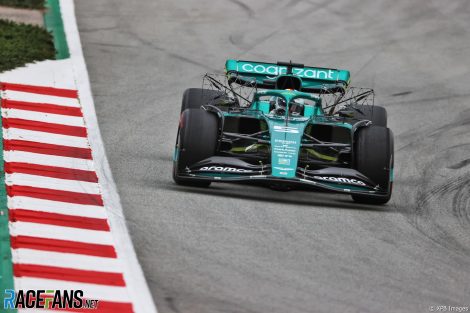
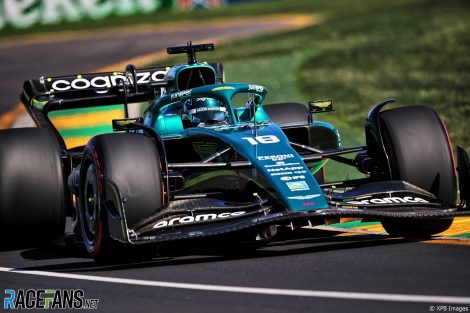





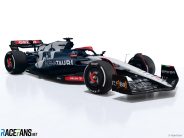

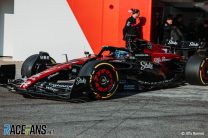

Imre (@f1mre)
16th February 2023, 7:37
I’ve heard somewhere that coloured carbon is a thing. So no need for paint, they colour the carbon during manufacturing.
S
16th February 2023, 8:21
Yep, that’s right.
Not just pigmented carbon fabrics, but also resins too.
Of course, it’s not all positives – there are trade-offs using these methods.
hunocsi (@hunocsi)
16th February 2023, 11:11
I’ve seen that pop up on Twitter occasionally for almost ten years now, it’s branded as Hypetex, and if it was useful in such a competitive environment, I’m sure it would have been given at least a try by a team, but there must be some drawbacks to it that stop them (cost, structural strength, weight etc).
Optimaximal (@optimaximal)
16th February 2023, 12:39
@hunocsi It likely boils down to somebody having a trademark or patent and they’re demanding a royalty to use it…
…which means people just, well, won’t use it…
Matthijs (@matthijs)
16th February 2023, 13:21
@f1mre But carbon is grey/black by nature (I think), so giving it a different colour requires aslo painting I assume, only on a much smaller level? If my assumptions are right, I assume that coloured carbon is heavier than grey/black carbon.
Wes
16th February 2023, 15:09
Exactly, the carbon has to be painted/dyed at some point, which imo would be heavier than just painting the entire completed car. The reason being that there’s so much more surface area contained in the carbon strands and weaves compared to simply the exterior. Every team has their carbon fiber weaves in the most weight efficient method possible while still having enough structural integrity. Also, using a colored carbon weave process is likely far more expensive and they’d have to take time and money perfecting the new weave. It just does not make any sense and is highly unlikely to be a weight saving advantage.
markp
16th February 2023, 14:21
Cost would be an issue for one but is a wrap lighter than painting? Simple rule change, all external parts of the car must be wrapped. No different than ensuring drivers have correct clothing, helmets otherwise drivers would drive naked with just goggles to protect their eyes to save weight.
Red Pill (@redpill)
16th February 2023, 21:48
@f1mre Some of the comments above are correct, while you can induce color in the carbon production, it can weigh a lot more as you can not control as well it being applied to just one side (outside). No matter what, color pigment has weight to it, some colors & its density weigh much more than others. Carbon weave can absorb a lot of color pigment and you would lose structural strength for the same weight per square meter. Plus you’re totally stuck with that color inside that carbon piece made, any fairing or repairs would stick out like a sore thumb. Paint only covering the carbons top surface is lighter than inducing color in the carbon production.
I hate the cars weighing so much and would love to see them get much lighter but perhaps F1 should create a minimum body paint applied weight rule so all the teams have an even level playing field in regards to painting their cars and keeping their branding and sponsors happy?
Many other sports using carbon where weight is critical only paint if they have to, some have to use white to avoid too much heat & UV’s exposure from the sun heating up the carbon and foam core which can happen very quickly and is very bad for it; they would only apply very light white coats (reduces heat) and then sand it down with some (30%) carbon black showing through, it’s not pretty but stays light and very effective. That doesn’t work for F1 and TV.
FYI: Yellow pigment is the lightest and colors: blue and red are heavier. Too bad Renault changed to Alpine as their older Black and yellow scheme would probably be the lightest on the grid.
SteveR (@stever)
17th February 2023, 1:27
Good comment, thanks. I would think, however, that cores would be nomex honeycomb, not foam. I worked in aerospace as a composite tool designer, and we used syntactic foam at attachment points to increase compressive strength for fasteners but everything else was nomex (which required a lot of hand work for tapers). The shear strength of a foam core certainly reduces the strength of the laminate versus honeycomb, so for weight reasons alone I would think honeycomb would be used. I could be wrong! The addition of colorants to the carbon matrix would not only add weight, it would probably reduce strength. In aircraft production we had to run an incredible amount of testing just to be allowed to inkjet identify layup plies after cutting. Yes, that was aircraft, but still there is always the thought that introducing other material will affect function.
Removing the engine and battery minimum weights and reducing the wheelbase by a bunch would go a long way towards producing a reasonable weight car….. And that front wing is obnoxious, IMHO.
Red Pill (@redpill)
17th February 2023, 4:28
@stever Thanks Steve for the correction and yes, you’re right. Foam core was the wrong term but thought to keep it simple and you’re also totally right about adding colorants would reduce strength and flex properties (both no bueno) which I didn’t mention as I’m sure engineering would have to add additional material to make up for the added loss and hence more weight to get back to their orig. strength targets.
We too also used a lot of nomex and custom defined prepreg carbon, high temp vacuum bagging, high fiber ratio content via autoenclave and OOA for items racing around the world non-stop.
I especially loved working with older school aluminum honeycomb (fun stuff), flexcomb, aramid; it’s so cool what you could with it (compound curves) when working with it and carbon, cold and hot forming it but I doubt any of that would be used today in a F1; they are one of the most technically advanced, cutting edge & extreme users of carbon with a cost is no object attitude (or least when it was :)
I cant imagine any F1 car designer wanting to use any paint on their cars if they were allowed to avoid it. Has anyone recently picked up a gallon of paint? It aint light, far from it, it feels more like lead weight.
Just use enough film to help with aerodynamics.
SteveR (@stever)
17th February 2023, 4:42
Thanks for the response. I have to say, most of the weight of paint is volatiles that evaporate during the curing process. I think the constraints on budget may limit what the teams can try re chassis construction materials, as some (most?) of this stuff would be bleeding edge and very expensive, as there is little requirement for materials like this in general usage. Paint would seem to be a minor issue, in my opinion, and I certainly hope we don’t get more regulations…..
SteveR (@stever)
17th February 2023, 4:48
When you mention high fiber ratios, were you using wet layups? We always were very careful to weigh resin to carbon before layup, and of course sucked out excess when bagging. Relam the delam was our motto….
Red Pill (@redpill)
17th February 2023, 18:13
A term we use that meant going for max strength & durability with least possible amount of epoxy without going past the line, no dry spots and even saturation. We get our prepeg carbon custom ordered in Swiss to our own specs, then bagged and then let the autoclave do it’s job but we also did some OOA.
Robert
16th February 2023, 7:41
Personally I think it’s sad that it has come to this, where the cars have so much bare carbon on them. The carbon-look in itself isn’t as cool as it was 15 years ago so I don’t see any reason to go for it other than necessity for weight savings. Mercedes can try to talk up their look as much as they want, but I think they must be truly desperate. They don’t have a livery this year, only some sponsor stickers.
If enough people, and perhaps more importantly the right people, shout out that they want to see more color on the grid eventually they will put it in the rules. Something like minimum 65% of visible bodywork area must be painted or wrapped. They already do CAD-checks for some stuff so that should be relatively easy to implement. You could still run a black livery if you wanted to, it would just have to be painted black. Or even carbon-looking vinyl on top of the carbon itself… if you truly desire that look. But if forced to cover up the structural material, I bet all teams would boast their true colors and nobody would ever doubt who is who in the pictures.
petebaldwin (@)
16th February 2023, 13:51
I think the problem will resolve itself if necessary. If it is genuinely difficult to tell the cars apart, it will naturally be talked about a lot during commentary and it’ll be a real problem specifically for all the newer Netflix fans Liberty are desperate to attract.
We haven’t seen them all on track yet so whilst we might not like the fact that there are big black areas on most cars, unless it actually causes a problem in terms of telling the cars apart, I don’t think any rules will change.
Red Pill (@redpill)
16th February 2023, 22:06
@petebaldwin Totally agree
“Form should follow function” but sometimes the ones (typically newbies) who only care about the form can scream the loudest.
I too think the matter will correct itself over some time and eventually finding an acceptable sweet spot between the two (a totally black unpainted carbon body is easily the lighter, hence faster car). Paint weight is significant but Identity between teams on the track is important but function is also very important, if not more important and the main reason why we’re driven to turning the tv on (for decades) is to watch them race (and why sponsor come) unless of course for the ones who think form & DWTS is vitally more important.
Robert
17th February 2023, 7:28
I don’t see any reason why this should “resolve itself”. Once teams have started utilizing something that they find performance from, they will never go back to the old ways unless the rules in that area change forcing them to. If they suddenly have weight left over now, they will put that in ballast where it improves performance, not in more paint. They have adopted this trick because F1 have become competitive enough for it to be beneficial, so why let go of it?
I am all for form following function, and I am strongly for a significantly reduced rule book where teams can really innovate and create different solutions. Basically I would love to se rules regarding safety standards and a few key performance limitations with everything else virtually unlimited but under a budget cap. But we are not there. Far from it. And before those completely overhauling rules become reality, I think they need to look into something to stop teams from not painting their cars.
petebaldwin (@)
17th February 2023, 11:31
When I saw it’ll sort itself, I really mean “it’ll be sorted, if it ever needs to be.” One of two ways it’ll go:
1. The cars will continue to look as dissimilar as they currently do and there will be no need to do anything about it.
2. One or more of the other teams decides to copy Mercedes and goes with an all black car. This will make the cars difficult to distinguish between and if not resolved, will eventually lead to a drop in viewers so they’ll do something about it.
Until it hurts them in the one way they care about (viewership), they’ll do absolutely nothing about this. They’ll continue to push sprint races, continue to pretend DRS makes races more exciting, continue to add more and more boring races on bad circuits…. They don’t care whether you’d like the cars to look better or sound better or race better. As long as you tune in, they’ve already got everything they want from you.
Wes
16th February 2023, 15:22
I honestly think the Merc livery is best looking of this years’ cars. It’s quite minimal and even the sponsor logos aren’t super in your face or of contrasting colors (that McLaren looks awful with the orange/blue mixed with the google colors, same as last season). I loved the previous black Mercs too, I really like the Petronas mint green on black, much prefer it to silver. But it does kinda suck that teams have to get so desperate to hit the weight target. I especially hate how high the min weight has gotten and how large the cars are now compared to the 2000s. I am all for improving collision safety and that will always add weight, but I feel they could go about 50kg lighter with slightly smaller cars but I have zero knowledge in this area about safety. I mean F2/F3 cars are significantly smaller and still must pass rigorous crash testing. F1 teams have their engines so compact that the overall car could be shorter imo, mostly cutting length at the front.
petebaldwin (@)
16th February 2023, 15:29
It looks really nice in their studio pictures but looks pretty rough up close…. The parts they’ve painted black look smart but the bare carbon… not so much.
petebaldwin (@)
16th February 2023, 15:30
eg: https://www.racefans.net/wp-content/uploads/2023/02/racefansdotnet-russell-2.jpg
Phil Norman (@phil-f1-21)
16th February 2023, 18:30
I thought I would check out the max. weight of an F2 car because I didn’t know. The weight limit is 755 kg. This compared to 796 kg for an F1 car. That’s quite significant.
They might not be able to make a weight reduction that drastic with the current PUs, but looking forward, FIA should try to specify, as early as possible that the next generation of cars are shorter and lighter. Maybe not more than 750 kg. Surely if they do this early enough, the teams and engine suppliers can deliver on time?
S
16th February 2023, 8:10
Just mandate that all external surfaces must be painted. It really is that simple.
If they want the carbon look, just apply a clear over it.
It’s getting really silly. The entire colour/livery (including vinyl stickers) of an F1 car weighs less than 2kg – about two thirds of a lap’s fuel in mass.
Surely someone has the sense to make a rule about this? It will apply equally to everyone, after all….
Adrian Hancox (@ahxshades)
16th February 2023, 8:16
Adding another nonsense rule to something that doesn’t need fixing isn’t the way to go. We need to be reducing the rulebook rather than enlarging it – especially with the cost cap in place.
S
16th February 2023, 8:26
Would you really be satisfied watching 20 carbon black cars that are all approximately the same shape, distinguished only by their impossibly difficult to read numbers and a handful of vinyl stickers?
Some rules just lead to positives for everyone. It wouldn’t exactly be a rule that’s controversial or hard to police, or comes at any great cost to performance, racing, finances or anything else.
Which rules should be removed?
Every aspect of F1 needs fixing in some form or other. Except the results, perhaps….
MichaelN
16th February 2023, 8:38
The people paying for those stickers will complain soon enough. Rather than ruining their sponsoring value with minimal weight savings on paint, they can just shorten the cars a bit. The FIA isn’t the one mandating these ridiculous lengths; that’s the team’s own choice.
S
16th February 2023, 9:10
Absolutely.
When you consider F1’s commercial situation right now, what incentive do the teams have to bend over backwards for sponsors any more?
Ferrari took home $200m last year from F1’s payments alone. Even the lowest paid teams walked away with over $50m each.
Sponsors are no longer vital – just a bit of extra cream on top.
Phil Norman (@phil-f1-21)
16th February 2023, 10:10
+ 1 Just set a maximum length and certify that all external surfaces must be painted. Simple.
I am sure teams have the ability to reduce weight by a kilo or two if they really need to.
elvira
16th February 2023, 11:53
Longer car, longer sticker.
MichaelN
16th February 2023, 16:04
That probably does reduce the pull the sponsors have to influence the overall look of the car. The share of the revenue generated by them has probably been reduced substantially by all the changes to the way the commercial rights money stream is split between the teams.
It’s quite obvious just from looking at the liveries which teams are spending to the cap – and then some on non-capped items – and which teams are basically just cashing in on the guaranteed money that comes with being in F1.
It used to be that the teams towards the back of the grid had all sorts of goofy sponsors and liveries that were a wide ranging collection of small-time companies who wanted to be in F1 but couldn’t afford the big teams. Now the worst teams seem to have the least sponsors – and given that this has been going on for years, it seems they’re not even bothering to try anymore.
Sam
16th February 2023, 13:09
This. It seems such an easy solution.
Armchair Expert (@armchairexpert)
16th February 2023, 8:37
It’s a joke in 2009 cars with 605kg minimum weight had 20-30 kilos of ballast to play with (only KERS-equipped cars were initially over that limit), but 13-14 years later with minimum weight at 798 kilos they all are struggling to meet that limit even with unpainted carbon. Yet apparently F1 is more popular than ever and tickets are selling like hotcakes. It only shows you can sell garbage as long as it’s well promoted.
Optimaximal (@optimaximal)
16th February 2023, 12:43
You’d think an @armchairexpert would realise that sticking extra stuff in the car like a hybrid battery system, a weighty driver-safety system like the halo and larger tyres would result in the weight limit going up.
S
16th February 2023, 13:11
Yet all of that stuff combined weighs less than the almost ~200kg gain – even without considering that much of it replaces what was already there before (F1 cars did have an engine before, too).
Certainly safety has improved, but not just by adding more mass – much of it is in improved design and material use.
The biggest change over that time is car size. A larger car has more aerodynamic influence, so the longer it is, the more downforce it can produce more efficiently – and the wider it is, the more mechanical stability and lower center of gravity it has.
Car length is entirely voluntary up to a maximum of 5.5 meters, so teams use it. They can make the cars smaller, but that would make them slower…
And who would choose to go slower if the rules didn’t mandate it?
Lewisham Milton
16th February 2023, 9:02
Turn the floodlights up at Bahrain!
Yaboy
16th February 2023, 9:16
Black cars matter
Asanator (@asanator)
16th February 2023, 10:52
I find it quite strange that this article highlights the McLaren as bringing more colour to the grid. One of the first things I noticed about the McLaren is how much more bare carbon there appeared to be. I could be wrong, but just because the rear wing is painted doesn’t mean that there is more colour. It looks to be painted at the expense of colour on the front wing, halo and airbox.
Just because the colour itself is brighter and there is more of a contrast between the papaya and carbon (compared to other cars) doesn’t mean there is more of it.
There is more colour on the Ferrari and Aston Martin than the McLaren for example.
Steve Mitchell
16th February 2023, 12:04
When you look at the MCL60 from rear quarter and directly above especially, it’s a black car with a bit of colour. I reckon it’s 75% black.
https://media-cdn.mclaren.com/media/images/galleries/MCL60_rear_1600_x_900.jpg
https://media-cdn.mclaren.com/media/images/galleries/MCL60_above_1600_x_900.jpg
GeeMac (@geemac)
16th February 2023, 14:02
Agreed, just because the painted bits on the MCL60 are bright orange doesn’t mean more of it is painted than the other cars.
Sergey Martyn
16th February 2023, 12:30
One of Henry Ford’s famous quotes about the Model T was, “Any customer can have a car painted any colour that he wants, so long as it is black.”
Soon F1 grid will resemble Ford T owners parade or a coffin showroom.
Sergey Martyn
17th February 2023, 8:43
Just imagine the excitement of the racing comments: One black car overtakes another black car, two black cars are in the pits, another black car retires, what a fight between two black cars for a position!
S
17th February 2023, 10:07
This has Crofty written all over it….
Repeatedly broken by Brundle with: “I think that was actually his team mate.”
ferrox glideh (@ferrox-glideh)
16th February 2023, 12:32
I couldn’t care less what the cars look like, as long as they are competitive.
S
16th February 2023, 13:14
Even if you can’t tell which is which?
And what if they aren’t competitive? This is F1, after all – close competition and competitive depth are not F1’s strong points.
petebaldwin (@)
16th February 2023, 14:08
If they aren’t competitive, having them painted in lots of bright colours isn’t going to improve my enjoyment of the show so that’s irrelevant.
Going back to the cars, I haven’t seen two yet that I’ll struggle to tell the difference between. Maybe the Alfa and the Ferrari at some angles (although that’s because the paint they have used is similar – not because of black).
What cars are you worried you won’t be able to tell apart? Obviously if a bunch of teams copy Mercedes and we have multiple cars that have no paint, the FIA will have to step in but we’re not at that point yet and I’m not convinced most teams would be willing to completely ditch their branding over what is a very small amount of weight.
S
16th February 2023, 15:51
But at least you’d be able to pick who each is straight away, even if they are all alone on the track.
I’m not worried. But I know a lot of viewers do struggle with this already, and it’s only getting worse each year.
It costs nothing to have cars painted in full, provides benefits to everyone, and it would end this nonsense of having all the cars look even more similar than necessary just to save 30 grams.
No they wouldn’t. This isn’t an FIA issue, it is an FOM issue.
And given the arrangements between FOM and the teams, I’m not so sure that FOM would really want to rock the boat any more then necessary at the moment.
Not completely there yet, but it’s definitely getting close each season – and even throughout each season.
petebaldwin (@)
16th February 2023, 16:13
Well it would be irrelevant because if we’re locked into another almost decade-long period of domination I won’t be watching! Almost everything I loved about F1 has been eroded away and the only thing that’s still got me watching is the racing itself. If that’s poor, I won’t be dedicating 23 weekends of my year to watch.
My point on telling the cars apart is that I don’t think they actually look that similar…. Most have painted the noses of the car so from the front, they don’t look similar and even from the side, I think most stand out enough for you to tell them apart fairly easily. I guess we’ll see how it works under the lights in Bahrain.
In regards to FIA/FOM/Liberty etc – yeah.. fair enough. I’ve completely lost track as to who decides what and don’t really care anymore. They’re all doing a horrible job of their respective responsibilities and are weakening the sport. The figures may look positive now but F1 has always relied on fans sticking around throughout boring periods and I don’t think that’s going to happen with the newer generation of fans.
Red Pill (@redpill)
17th February 2023, 4:29
Thats what numbers are for.
S
17th February 2023, 8:50
I’ll be honest – I haven’t picked out an F1 car by the number on it since… well… ever. They are impossibly difficult to see, and it has never been necessary until recently because they’ve always been painted.
Why have they painted race cars since racing began? To be highly visible and easily identifiable, of course – because their purpose for existing is for people to watch them.
OG Fuel
16th February 2023, 19:31
I’m not one to push for more and more regulation, but just mandate the whole car (floor excluded) to be painted.
Make black be a conscious aesthetic choice. I doubt sponsor prefer letting go their colours in favor of black.
Also, it’s making the gride look kinda bland.
Neil (@neilosjames)
16th February 2023, 19:36
2024 Technical Regulations incoming…
4.1 Minimum mass
The mass of the car, without fuel, must not be less than 796kg at all times during the Competition.
If, when required for checking, a car is not already fitted with dry-weather tyres, its mass will be determined using a set of dry-weather tyres selected by the FIA technical delegate.
4.1.2 Minimum decorative mass
The mass of the exterior decorative elements of the car must not be less than 5kg at all times during the Competition.
If, when required for checking, the team is unable to take off every gram of paint and remove every single sticker, the FIA technical delegate may use a scraper, heat gun and FIA-approved bucket to collect a representative sample of the exterior decoration for the purpose of weighing.
DavidS (@davids)
17th February 2023, 5:30
Are they going to have to include a technical regulation requiring certain body panels to be coated in a colour coat and a clear coat? Teams can do black if they want, but it has to be painted, so there is no weight advantage.
Three quarters of the grid being a black car with tiny patches of colour is ridiculous.